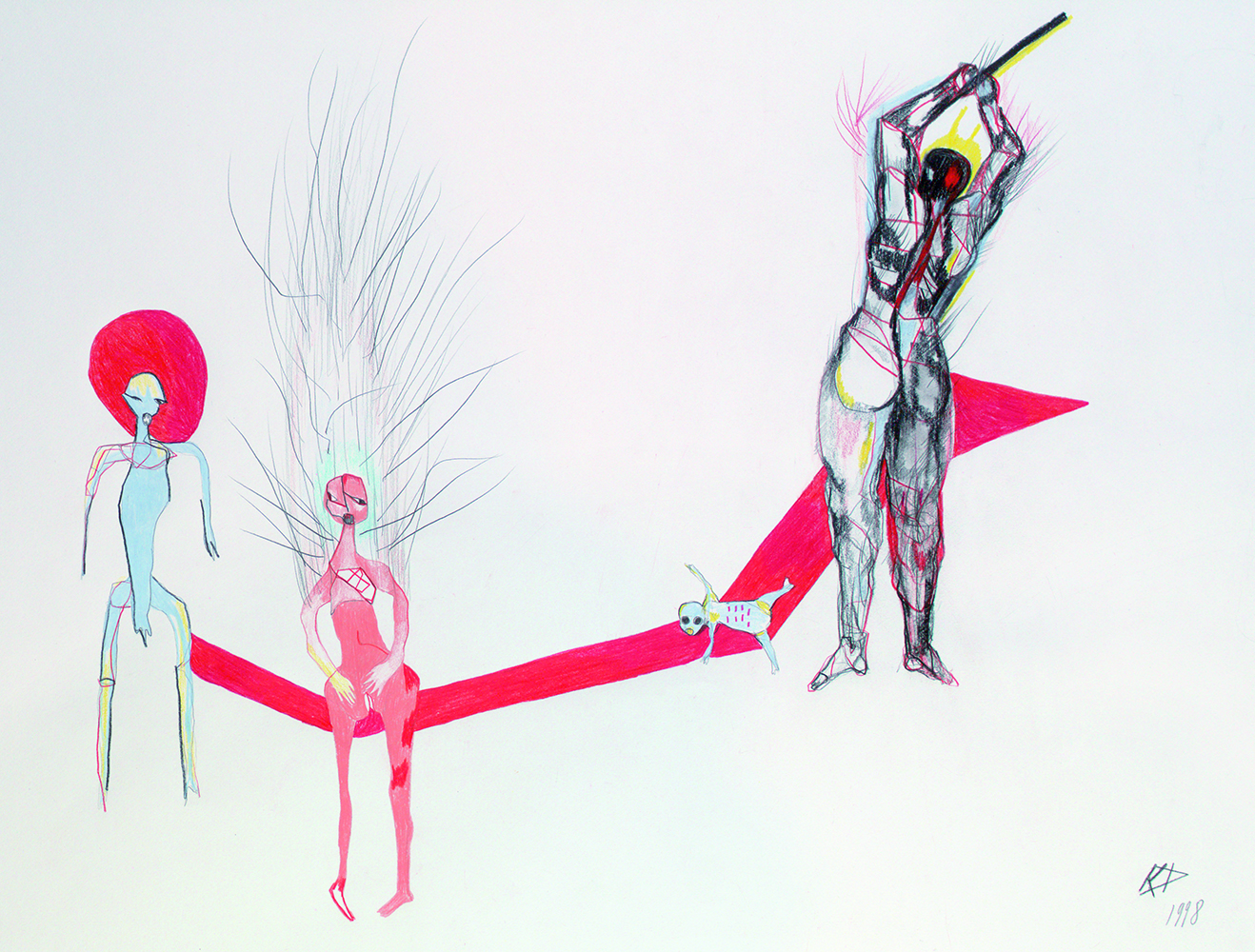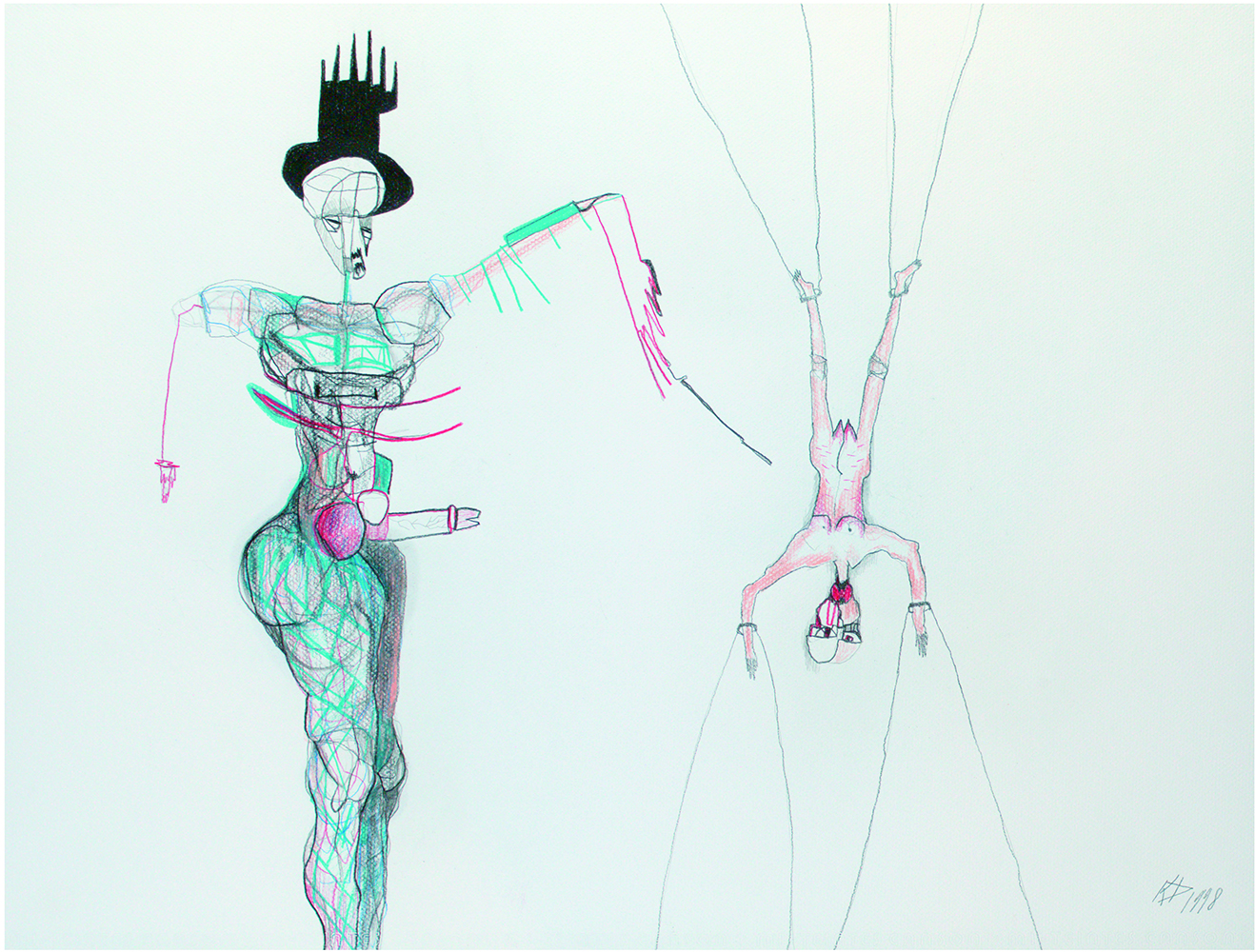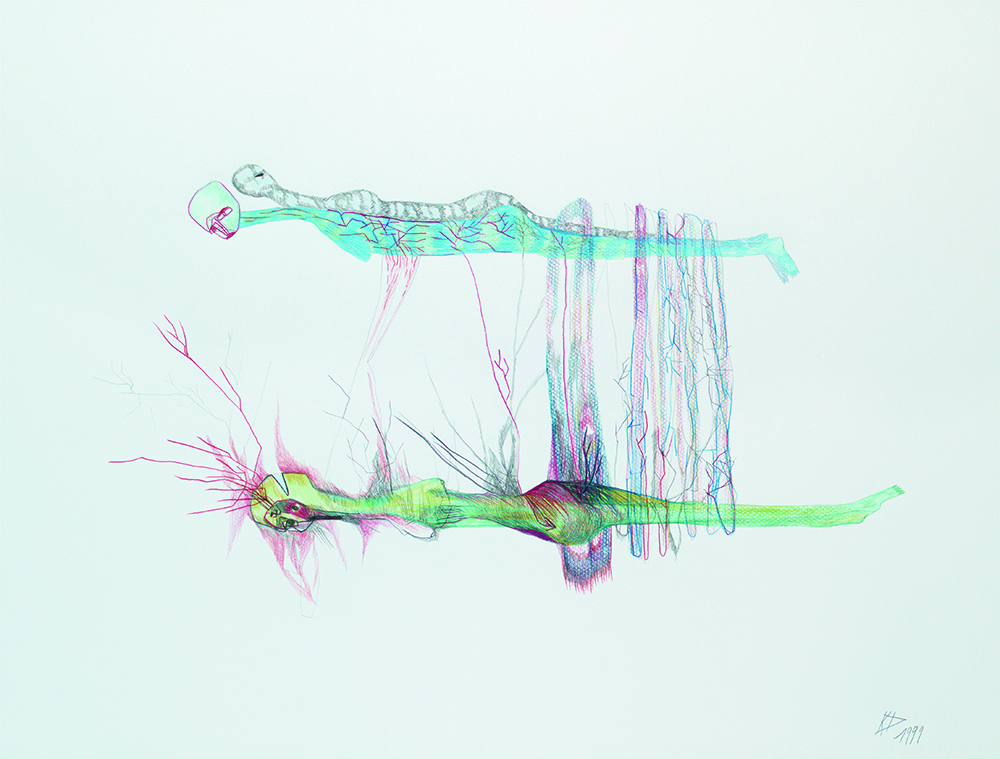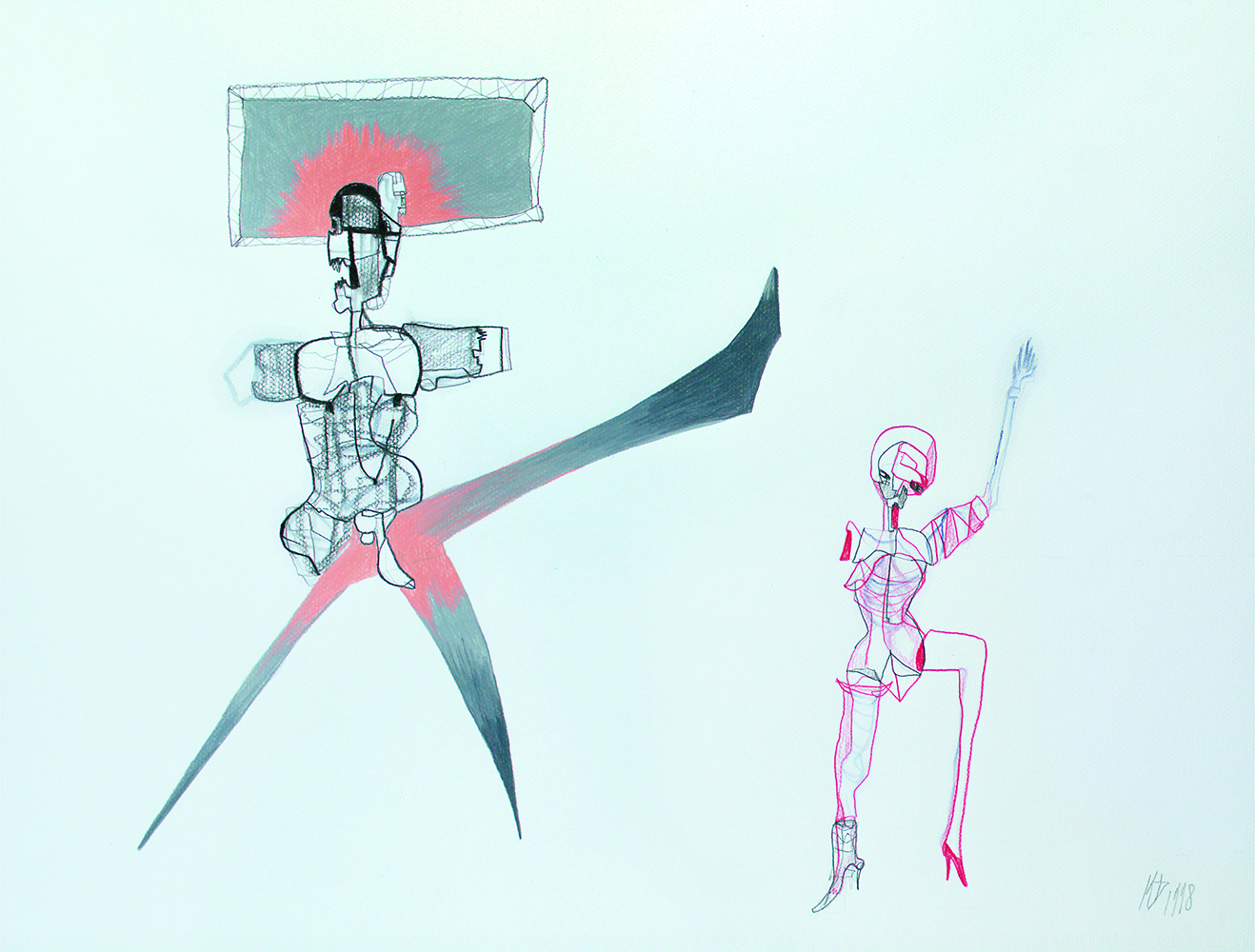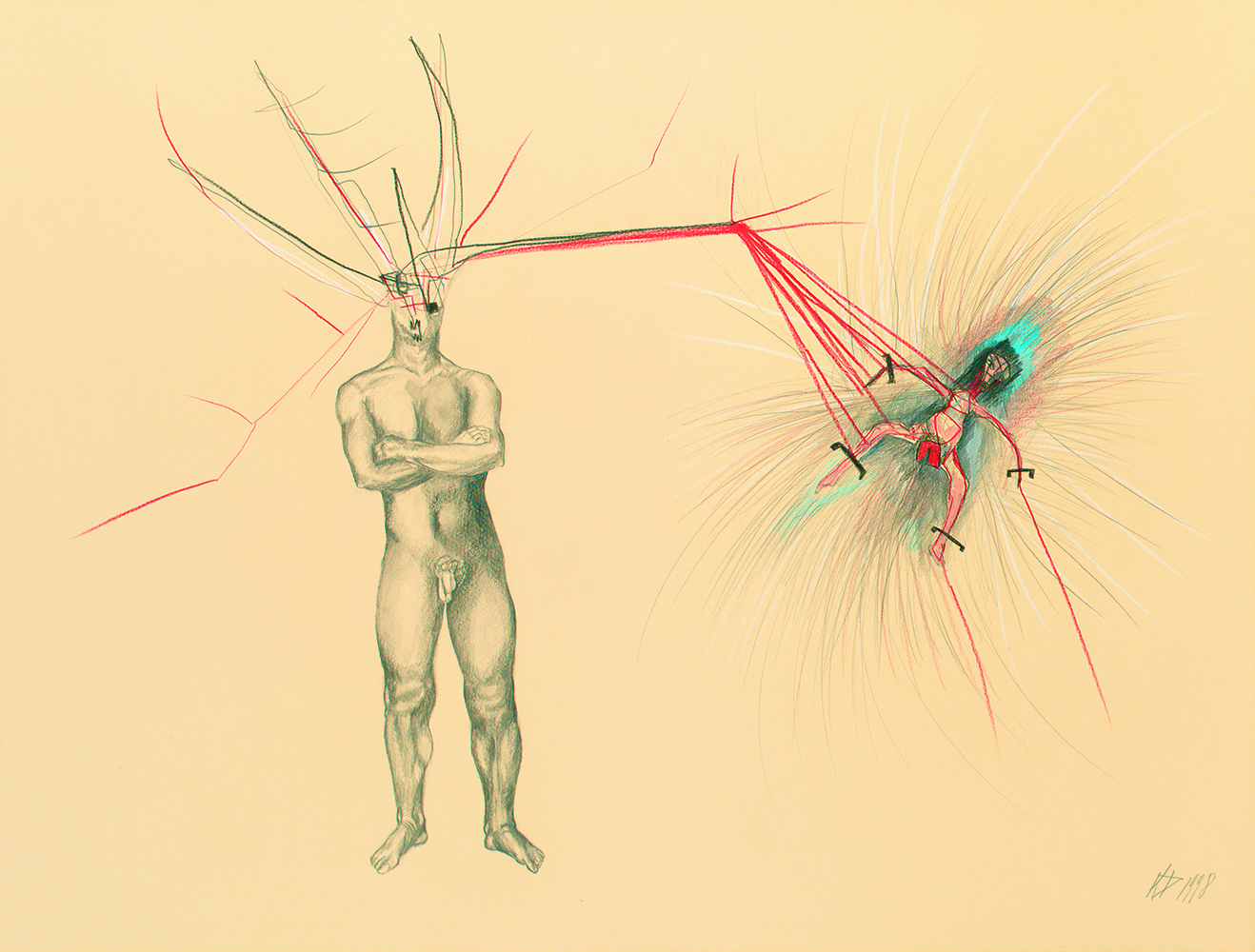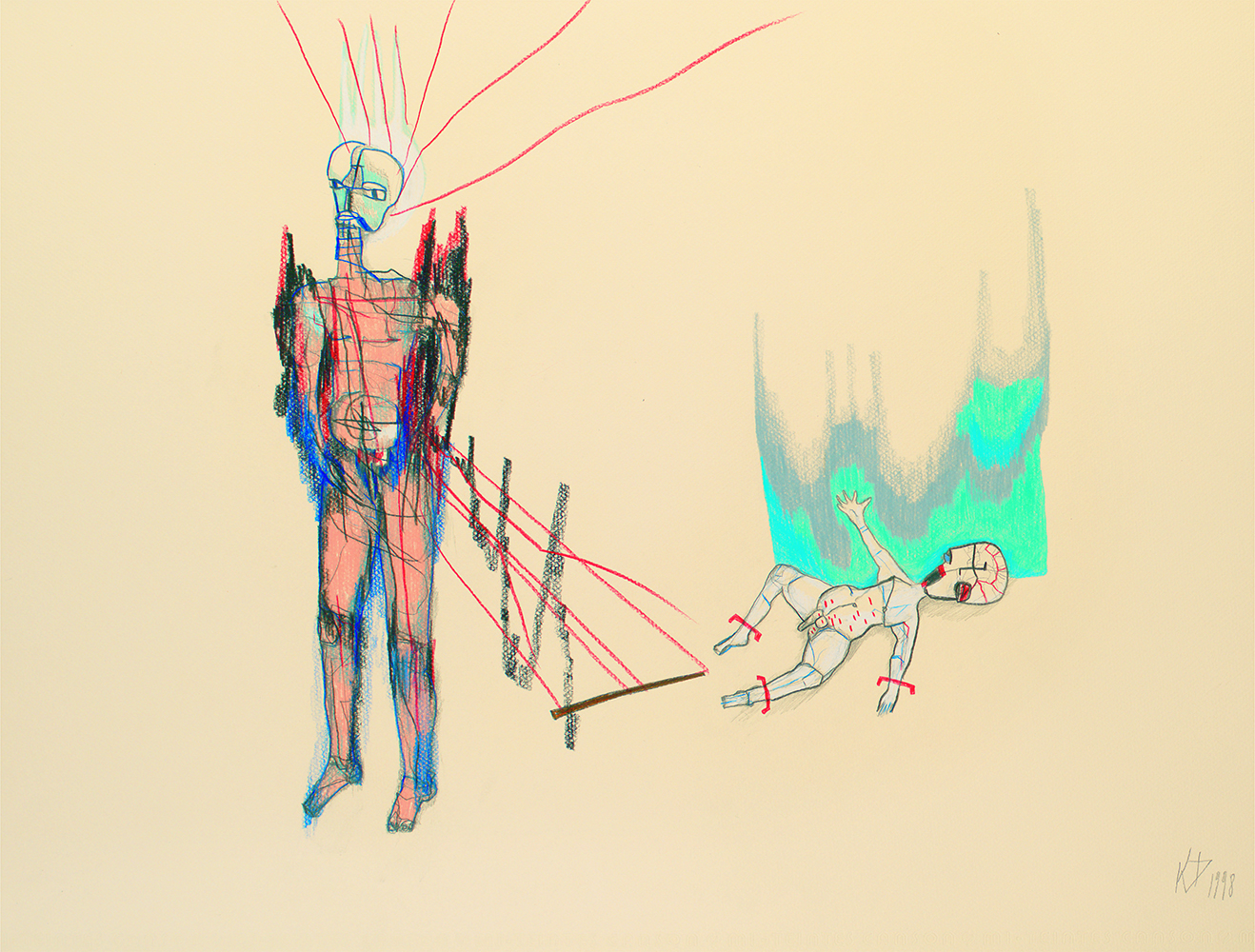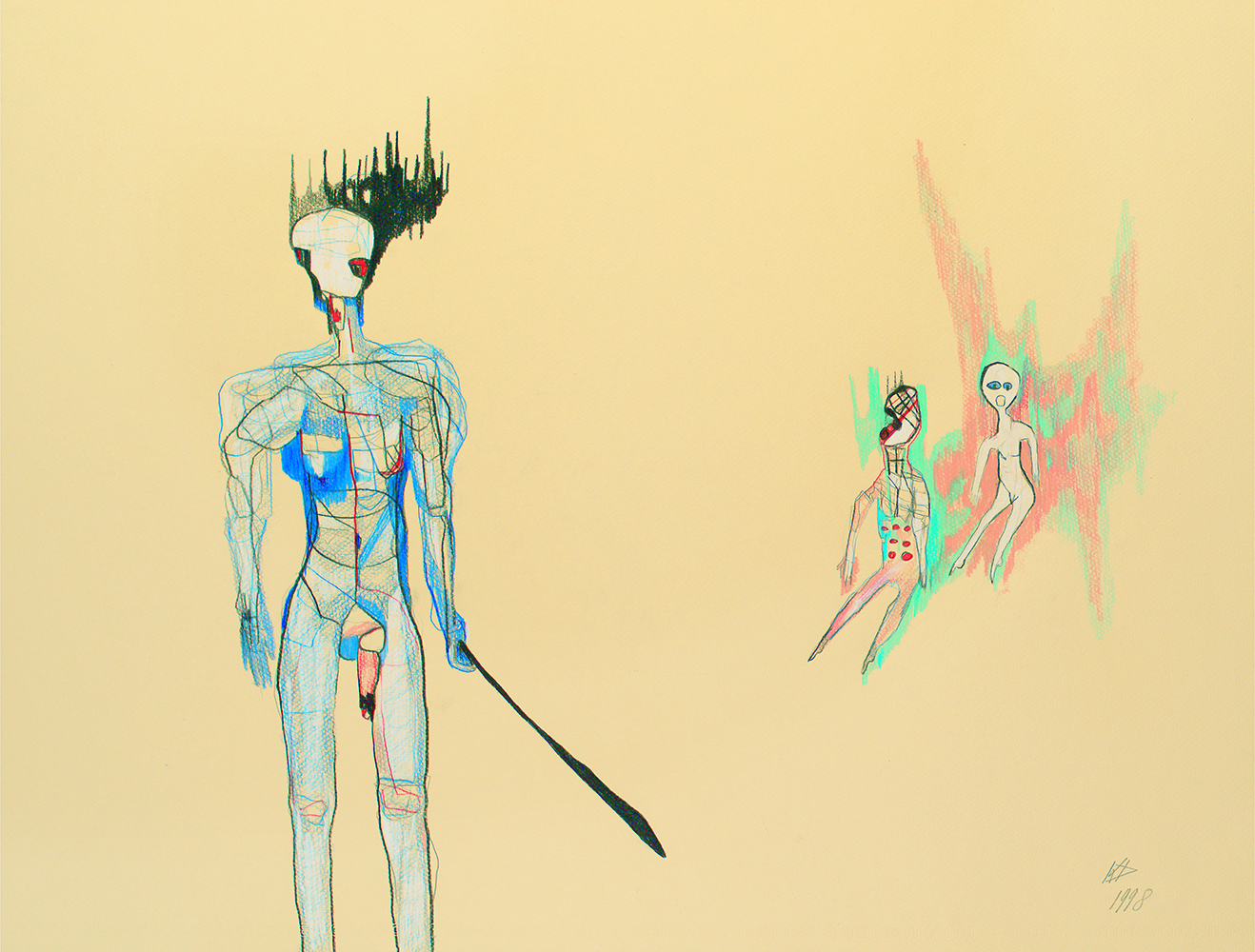Katja Duftner
Katja Duftners „J'accuse"
Die Anklage als Auftritts- und Aussageform in der Kunst hat uns überwiegend im geschriebenen Wort erreicht: ob es sich um Schillers Sturm-und-Drang-Dramen „In Tyrannos“ handelt, um Büchners umstürzlerische Flugschrift „Der hessische Landbote" in der Folge der Französischer Revolution, um Bertold Brechts schmetternde politischen Lehrgedichte, um Emile Zolas hochrhetorische Abrechnung „J'accuse" -in der Rolle des Schriftstellers als Moralinstanz- mit dem korrupten Pariser Militärapparat oder um Paul Celans anklagend einpeitschendes KZ-Gedicht „Todesfuge".Was die Malerei betrifft, so vermuten wir in der Darstellung brandschatzender Horden bei Brueghel Anspielungen auf spanische Besatzungsgruppen in holländischen Dörfern - leicht lesbar für die Zeitgenossen. Zwar gab es die sozial engagierte Zeichenkunst einer Käthe Kollwitz, zwar gab es die Agit-prop-Bewegung, die polemischen und satirischen Karikaturen eines George Grosz und Otto Dix, die politisch aufklärerisch attackierenden Collagen eines John Heartfield, doch waren das eher Solitäre in der Kunstgeschichte, zuletzt der Aufschrei in Picassos Großgemälde „Guernica". Goyas und Kubins Alpträume erheben sich über den Anlass heraus zu allgemeinen Schreckensvisionen der Menschheit. Wer sich das aktuelle Kunstgeschehen vor Augen hält, wird ebenfalls weniges finden, das konkrete Phänomene oder Probleme kritisch oder polemisch ins Bild setzt. Künstlerisch überragende Beiträge, die aus der 68er Revolte ihre Impulse bezogen, mündeten in konzeptuelle - oder allegorische Weltentwürfe - wie etwa in Josef Beuys' Schaffen.
Insofern verdient es unsere Aufmerksamkeit, wenn heutzutage sich ein Oeuvre bzw. ein Teil eines Oeuvres eines bildenden Künstlers auf ein eingegrenztes, eindeutig als kritische Stellungnahme identifizierbares Thema richtet, wie dies im Fall der Tiroler Malerin Katja Duftner vorliegt. (…) Der entstandene Zyklus stellt keine Abfolge im Sinne einer sich entwickelnden Erzählung her, sondern von Mal zu Mal, von Bild zu Bild prallen die Welt der Erwachsenen, dargestellt durch die Elemente der Züchtigung sowie die Instrumente der Sexualgewalt und die Welt der Kinder zusammen, dargestellt durch die in erbärmlicher Nacktheit auf die bevorstehende Demütigung wartenden Winzlinge. Die Situation der Opfer ist eindeutig und ausweglos, die der Täter hat zwei Seiten: sie sind Erzeuger und Zerstörer gleichzeitig. (…)
Es sind Katja Duftner ebenso gelungen Chiffren in der Zeichnung zu erfinden, die glaubhaft für namenloses Leid stehen und so andere Bilder in unsere Köpfe bringen, welche der herrschenden Stumpfheit gegenüber dem tabuisierten Thema ein Stück Menschlichkeit und Solidarität entgegensetzt, mit der neu geschärften Waffe der Kunst.
Prof. Dr. Elmar Zorn im Katalog "Kinderzimmer - sexuelle Gewalt an Kindern"
. . . . . . . . . . . . . . . . . . . . . . . . . . . . . . . . . . . . . . . . . . . . . . . . . . . . . . . . . . . .
Wir dürfen nicht vergessen, dass diese Kinder später als Erwachsene unser Leben und unsere Gesellschaft gestalten.
Wir entscheiden durch die Erziehung der nachfolgenden Generationen, in welchem Maße Gewalt und Missbrauch unser aller Zukunft bestimmen.
Daniela Schmidt-Ndasi im Katalog "Kinderzimmer - sexuelle Gewalt an Kindern"
Katja Duftner´s „J'accuse"
In the arts, accusation as a form of presentation and expression has come down to us mainly through the written word, be it in Schiller's youthful criticism of tyranny, in Büchner's revolutionary pamphlet 'Der hessische Landbote' written in the wake of the French revolution, in Bertold Brecht's scathing political poems, in Emile Zola's highly rhetoric charge against the corrupt military government in Paris, 'J'accuse', in which he takes on the role of the author as a moral authority, or in Paul Celan's bitter and accusatory holocaust poem 'Death Fugue'.In painting, we can assume that Brueghel’s depiction of pillaging hordes was meant as an allusion to the Spanish occupation forces in Dutch villages – an image that would have been easy to decipher to his contemporaries. But although there have been the social criticism of Käthe Kollwitz's drawings, the polemical and satirical caricatures of George Grosz and Otto Dix, the political attack in the collages of John Heartfield or the outcry of Picasso’s ‘Guernica’ mural, accusation in the visual arts remains a more or less isolated phenomenon. One could argue that the nightmares of Goya and Kubin do not count because they go beyond the occasions that prompted them and become horror visions of all humanity. Looking at contemporary visual art, works that take a critical or polemical stance with regard to concrete issues and problems are few and far between. Outstanding works of art that drew on the momentum of the uprisings of 1968 ended in conceptual or allegoric world views – such as those of Josef Beuys.
It is therefore all the more remarkable when an oeuvre or part of an oeuvre of a contemporary fine artist also presents an open critical statement on a clearly defined topic, as is the case in the work of Katja Duftner from Tyrol. (…) The cycle does not present a sequence in the sense of an unfolding narrative. Rather, the world of adults and the world of children collide in it time and again, image after image. The former is represented by elements of corporal punishment and instruments of sexual violence and stands in stark contrast to the latter, in which tiny humans await imminent humiliation in pitiful nakedness. The situation of the victims is clear and hopeless, that of the perpetrators is characterized by two different aspects: that they are creators and destroyers at the same time. (…)
In her drawings Katja Duftner has managed to create ciphers that stand convincingly for the nameless suffering and that trigger other images in us – images that set humanity and solidarity against the prevailing indifference towards this tabooed topic. For all that she uses the freshly whetted weapon of art.
Excerpt from the catalogue ‘Kinderzimmer – sexuelle Gewalt an Kindern' (The children's room – sexual violence against children)
by Prof. Dr. Elmar Zorn.
. . . . . . . . . . . . . . . . . . . . . . . . . . . . . . . . . . . . . . . . . . . . . . . . . . . . . . . . . . . .
We must not forget that these children will grow up and as adults will also shape our lives and society. The way in which we educate future generations will decide to which extent violence and abuse will determine our future.
Daniela Schmidt-Ndasi in the catalogue 'Kinderzimmer – sexuelle Gewalt an Kindern'.
___________________________________________________________
Der Katalog "Kinderzimmer - sexuelle Gewalt an Kindern" (36 Seiten, 13 Farbabbildungen) mit Texten von Prof. Dr. Elmar Zorn, Daniela Schmidt-Ndasi sowie einer Einführung von Sabine Leutheusser-Schnarrenberger, Bundesjustizministerin a.D., ist 2002 bei Lipp, München, erschienen.
